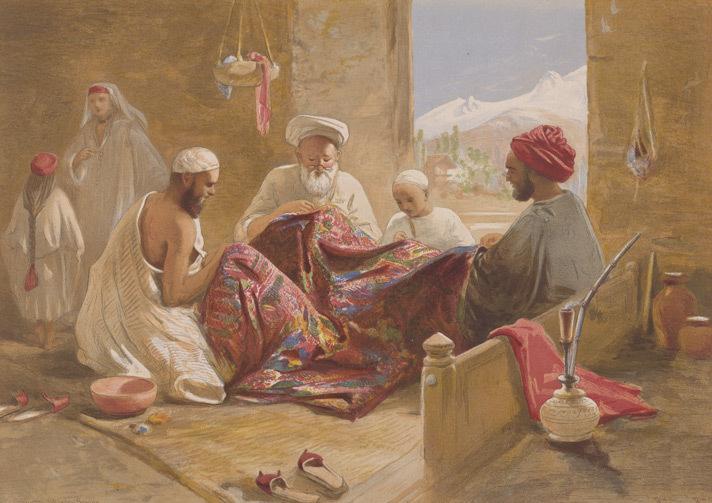Fichier:Shawl makers in Kashmir (1867).jpg
Shawl_makers_in_Kashmir_(1867).jpg (712 × 503 pixels, taille du fichier : 55 kio, type MIME : image/jpeg)
Historique du fichier
Cliquer sur une date et heure pour voir le fichier tel qu'il était à ce moment-là.
| Date et heure | Vignette | Dimensions | Utilisateur | Commentaire | |
|---|---|---|---|---|---|
| actuel | 17 mai 2011 à 20:10 |  | 712 × 503 (55 kio) | Woudloper | {{Information |Description={{en|This chromolithograph is taken from plate 2 of William Simpson's 'India: Ancient and Modern'. 1867. Europeans prized cashmere shawls for the softness and warmth of the wool, the rich colours, the intricacy of the weave and |
Utilisation du fichier
La page suivante utilise ce fichier :
Usage global du fichier
Les autres wikis suivants utilisent ce fichier :
- Utilisation sur ar.wikipedia.org
- Utilisation sur be.wikipedia.org
- Utilisation sur bn.wikipedia.org
- Utilisation sur en.wikipedia.org
- Utilisation sur fa.wikipedia.org
- Utilisation sur gu.wikipedia.org
- Utilisation sur kn.wikipedia.org
- Utilisation sur mr.wikipedia.org
- Utilisation sur nl.wikipedia.org
- Utilisation sur pa.wikipedia.org
- Utilisation sur pl.wiktionary.org
- Utilisation sur pnb.wikipedia.org
- Utilisation sur ro.wikipedia.org
- Utilisation sur ru.wikipedia.org
- Utilisation sur sa.wikipedia.org
- Utilisation sur sr.wikipedia.org
- Utilisation sur ta.wikipedia.org
- Utilisation sur te.wikipedia.org
- Utilisation sur uk.wikipedia.org
